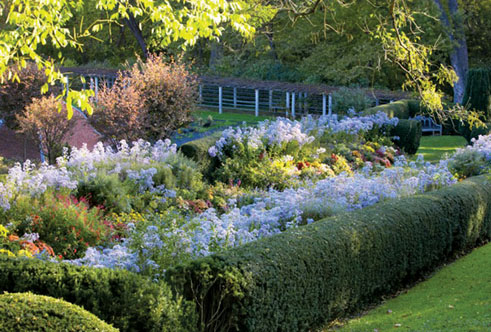Dumbarton Oaks Closes Gardens for Pipe Project

By Alexa PerlmutterCurrent Correspondent
The formal gardens of Dumbarton Oaks — acquired by Harvard University in 1940 — are currently undergoing stormwater remediation efforts and will be closed until March 15, 2018.
The museum and main house on the site will remain open throughout the renovations, and the adjacent Dumbarton Oaks Park owned by the National Park Service is also unaffected.
The entirety of Dumbarton Oaks, located in north Georgetown east of Wisconsin Avenue, was originally owned by Robert and Mildred Bliss, who financed the gardens. In 1940, the Bliss family gave the formal gardens and research collection to Harvard University, while the lower 27 acres of wild gardens went to the National Park Service.
The original irrigation and water management pipes that still run through the Harvard-owned gardens are made of terra cotta. Coming up on the 100th birthday of the gardens, which were designed originally by trailblazing architect Beatrix Farrand, the mile-long stretch of pipes need to be revamped, according to Dumbarton Oaks communications manager Erica Bogese.
The pipes have been crumbling and cracking for years, limiting the amount of water that can reach certain areas of the garden. To properly hydrate the estate, Bogese said, gardeners have to pull hoses around the property; there is no proper sprinkler system. The replacement pipes will be made of polyvinyl chloride, which have a longer lifespan than the existing ones.
“No one was designing water management systems with the environment in mind,” Bogese noted. “Renovating the irrigation system will allow us to be more eco-friendly.”
The pipes were originally installed in the 1920s under the guidance of Farrand, who also designed gardens at the Washington National Cathedral and New York’s Hyde Park.
Farrand’s vision and the garden’s beauty will be preserved throughout the process, according to Bogese. Managers of the property worked with conservators and designers before the closure to ensure that her designs are unaffected. “If we do it right, no one will see a difference,” Bogese said.
The updates to the property, according to Bogese, demonstrate Dumbarton Oaks’ commitment to being a good neighbor and hopefully will attract more visitors to the garden and museum — “the hidden gem of the city,” she said.
When the gardens reopen to the public in March, however, that will not be the end of upcoming improvements to the original Dumbarton Oaks property. The public park is currently in the early phases of its own two-year pipe and irrigation restoration project, according to Dumbarton Oaks Conservancy president Lindsey Milstein.
“It’s pure serendipity that both sites are going through stormwater remediation efforts at around the same time,” Milstein told The Current. “Although [the gardens] are now under separate ownership, it is one design. It is one piece of art, and one part needs the other to really shine.”
The park updates will be implemented next spring, according to Milstein.
This article appears in the July 19 issue of The Georgetown Current newspaper.
